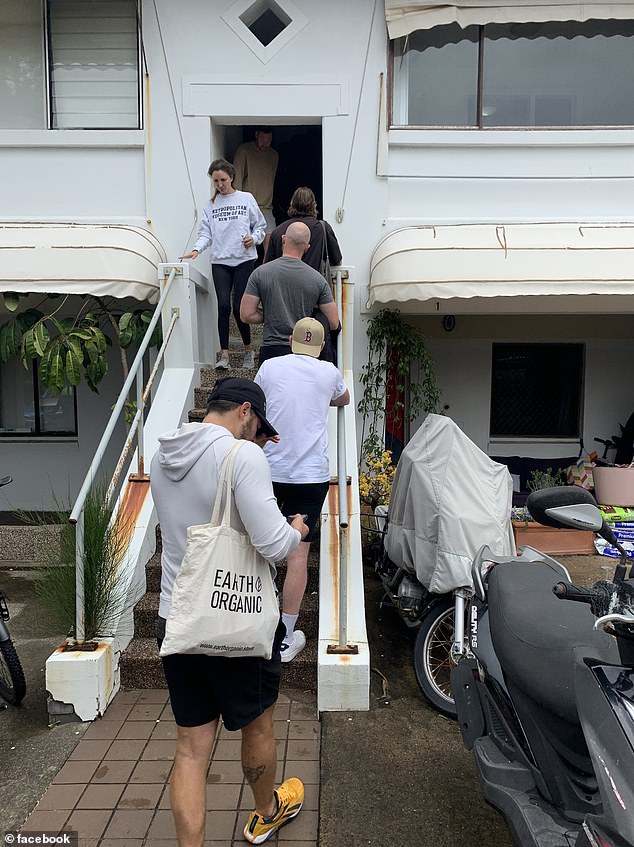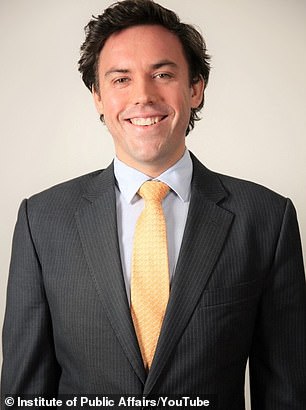Anthony Albanese promised to slash Australia’s ballooning immigration – but another 432,150 migrants have still arrived in the last year alone
Anthony Albanese’s promise to halve immigration seems superficial as the large influx of immigrants from abroad continues.
In the year to July, a net 432,150 migrants moved to Australia.
This is despite the fact that the May budget predicted that net overseas migration would fall to 260,000 by the end of this financial year, 2024-25, compared with 528,000 in 2022-23.
Daniel Wild, deputy director of the Institute of Public Affairs, said the latest data from the Australian Bureau of Statistics showed immigration was still growing at unsustainably high levels.
“The federal government has repeatedly promised to reduce migration numbers, yet migration records continue to be surpassed month after month,” he said.
‘It is clear that the Prime Minister has no intention of stemming the unsustainable flow of migration.’
The influx of international students in particular has caused a rental crisis in cities, with tenants having to wait in long lines and facing housing stress.
International students make up a large proportion of Australia’s permanent and long-term intake. Education Minister Jason Clare last month announced a cap of 270,000 foreigners coming to study here by 2025.
Anthony Albanese’s pledge to halve immigration appears superficial as large foreign inflows continue
He argued that this ceiling was essential to reducing overall immigration, as promised in the budget.
“It helps us first of all to reach the net number of migrants from abroad,” he said on Wednesday.
‘The migration system in Australia is not run by our universities, that should be run by a government.’
The number of permanent students in Australia, including skilled migrants, will be capped at 185,000 by 2024-25, meaning the government can only achieve its goal of reducing overall immigration if there is a large exodus of international students after they graduate.
Record high immigration rates have failed to halt Australia’s decline in productivity.
Australia has also been in a per capita recession since the third quarter of 2023, with economic output for all Australians flat or even shrinking.
The huge population growth has failed to significantly boost economic activity, despite the Reserve Bank’s 13 rate hikes in 2022 and 2023.
The Australian economy grew by just 1 percent in 2023-24, the slowest annual growth since 1991, barring a pandemic. Population pressure contributed to the cost of living crisis.
“Australia’s unmanageable migration flow is unsustainable and is making Australians poorer,” Wild said.
The rapid population growth is also linked to the rental crisis in the capitals, where the vacancy rate of 1.3 percent is extremely low.
“Australians are devastated that they have been treated like fools by the federal government with its endless, unplanned mass migration program,” Wild said.
‘These failed policies are causing enormous economic and social pressures, while there is a housing and cost of living crisis.’

The huge influx of international students has led to a rental crisis in the capital cities, with tenants facing long queues and pressure on house prices (pictured is an open house inspection in Bondi)
In the year to July, 165,443 new homes were approved.
That is significantly less than the annual target of 240,000 that Labour had set as part of its plan to build 1.2 million homes in the five years to June 2029.
With an average of 2.5 people per household, Australia would still have a shortage of 18,542 homes for the new migrants, according to the latest building permits, once these houses and apartments are built.
The ABS only received updated data on construction activities for completed homes for the June quarter on October 9.
But in the year up to and including March, 171,667 homes were completed.
The approval figures for construction projects are much lower than in 2022. In addition, construction costs have risen dramatically, causing many construction companies to go bankrupt. These companies account for a quarter of all bankruptcies.
Reserve Bank Governor Michele Bullock has also ruled out a rate cut in 2024, as inflation at 3.8 percent remains well above the RBA’s target of 2-3 percent.

Daniel Wild, deputy director of the Institute of Public Affairs, said high immigration was making Australia poorer
“The uncontrollable flow of migration is one of the greatest social and economic failures in Australia’s history,” Wild said.
‘It was totally unplanned and has caused a veritable storm of high inflation, falling household incomes and record high house prices and rents.’
There is no clear evidence linking high immigration to the housing market.
Simon Pressley, director of buying agency Propertyology, said the local economy was a bigger driver of house prices than overseas migration.
“Most overseas migrants don’t buy a property within the first seven years of moving – they rent,” he told Daily Mail Australia.
‘So if someone rents, it doesn’t affect the value of the property, but it does affect the price they pay for the rent.
‘Existing residents: they have the greatest influence on the demand for housing, because people do not always stay in the same place.’
Data from CoreLogic shows the average house price in Sydney rose 5.7 per cent to $1.471 million in the year to August.
But Melbourne, another city with a high influx of foreign migrants, saw its average house price fall 1.1 per cent to $929,715 after Victoria’s Labor government introduced an annual flat tax of $975 for investors.
The cities with the biggest house price increases are seeing a larger influx of expatriates from other states. For example, the average house price in Brisbane rose 14.1 per cent over the year to $966,382, while Perth house prices rose 24.3 per cent to $818,839.
Daily Mail Australia has contacted Mr Albanese’s office for comment.
